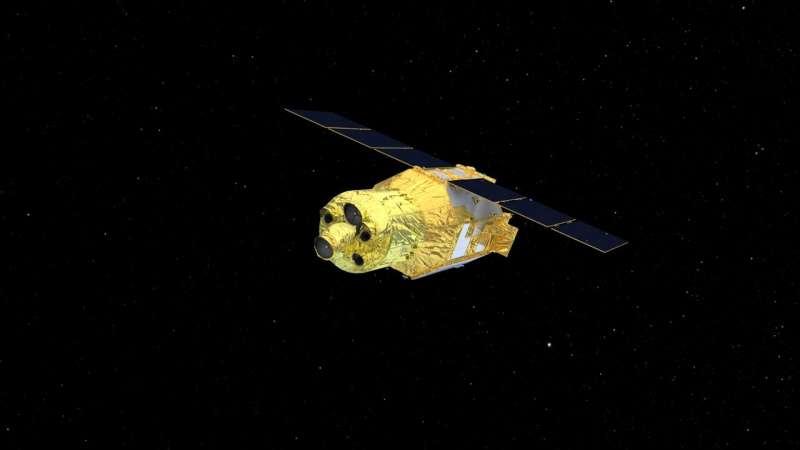New XRISM satellite mission to study ‘rainbow’ of X-rays

A new satellite called XRISM (X-ray Imaging and Spectroscopy Mission, pronounced “crism”) aims to pry apart high-energy light into the equivalent of an X-ray rainbow. The mission, led by JAXA (Japan Aerospace Exploration Agency), will do this using an instrument called Resolve.
XRISM is scheduled to launch from Japan’s Tanegashima Space Center on Aug. 25, 2023 (Aug. 26 in Japan).
“Resolve will give us a new look into some of the universe’s most energetic objects, including black holes, clusters of galaxies, and the aftermath of stellar explosions,” said Richard Kelley, NASA’s XRISM principal investigator at NASA’s Goddard Space Flight Center in Greenbelt, Maryland. “We’ll learn more about how they behave and what they’re made of using the data the mission collects after launch.”
Resolve is an X-ray microcalorimeter spectrometer instrument collaboration between NASA and JAXA. It measures tiny temperature changes created when an X-ray hits its 6-by-6-pixel detector. To measure that minuscule increase and determine the X-ray’s energy, the detector needs to cool down to around minus 460 Fahrenheit (minus 270 Celsius), just a fraction of a degree above absolute zero.
The instrument reaches its operating temperature after a multistage mechanical cooling process inside a refrigerator-sized container of liquid helium.
By collecting thousands or even millions of X-rays from a cosmic source, Resolve can measure high-resolution spectra of the object. Spectra are measurements of light’s intensity over a range of energies. Prisms spread visible light into its different energies, which we know better as the colors of the rainbow. Scientists used prisms in early spectrometers to look for spectral lines, which occur when atoms or molecules absorb or emit energy.
Now astronomers use spectrometers, tuned to all kinds of light, to learn about cosmic objects’ physical states, motions, and compositions. Resolve will do spectroscopy for X-rays with energies ranging from 400 to 12,000 electron volts by measuring the energies of individual X-rays to form a spectrum. (For comparison, visible light energies range from about 2 to 3 electron volts.)
“The spectra XRISM collects will be the most detailed we’ve ever seen for some of the phenomena we’ll observe,” said Brian Williams, NASA’s XRISM project scientist at Goddard. “The mission will provide us with insights into some of the most difficult places to study, like the internal structures of neutron stars and near-light-speed particle jets powered by black holes in active galaxies.”
The mission’s other instrument, developed by JAXA, is called Xtend. It will give XRISM one of the largest fields of view of any X-ray imaging satellite flown to date, observing an area about 60% larger than the average apparent size of the full Moon.
Resolve and Xtend rely on two identical X-ray Mirror Assemblies developed at Goddard.
XRISM is a collaborative mission between JAXA and NASA, with participation by ESA (European Space Agency). NASA’s contribution includes science participation from the Canadian Space Agency.
Citation:
New XRISM satellite mission to study ‘rainbow’ of X-rays (2023, July 17)
retrieved 17 July 2023
from https://phys.org/news/2023-07-xrism-satellite-mission-rainbow-x-rays.html
This document is subject to copyright. Apart from any fair dealing for the purpose of private study or research, no
part may be reproduced without the written permission. The content is provided for information purposes only.
For all the latest Science News Click Here
For the latest news and updates, follow us on Google News.

